HISTORY
Le principali creazioni che hanno fatto la storia di Diapason
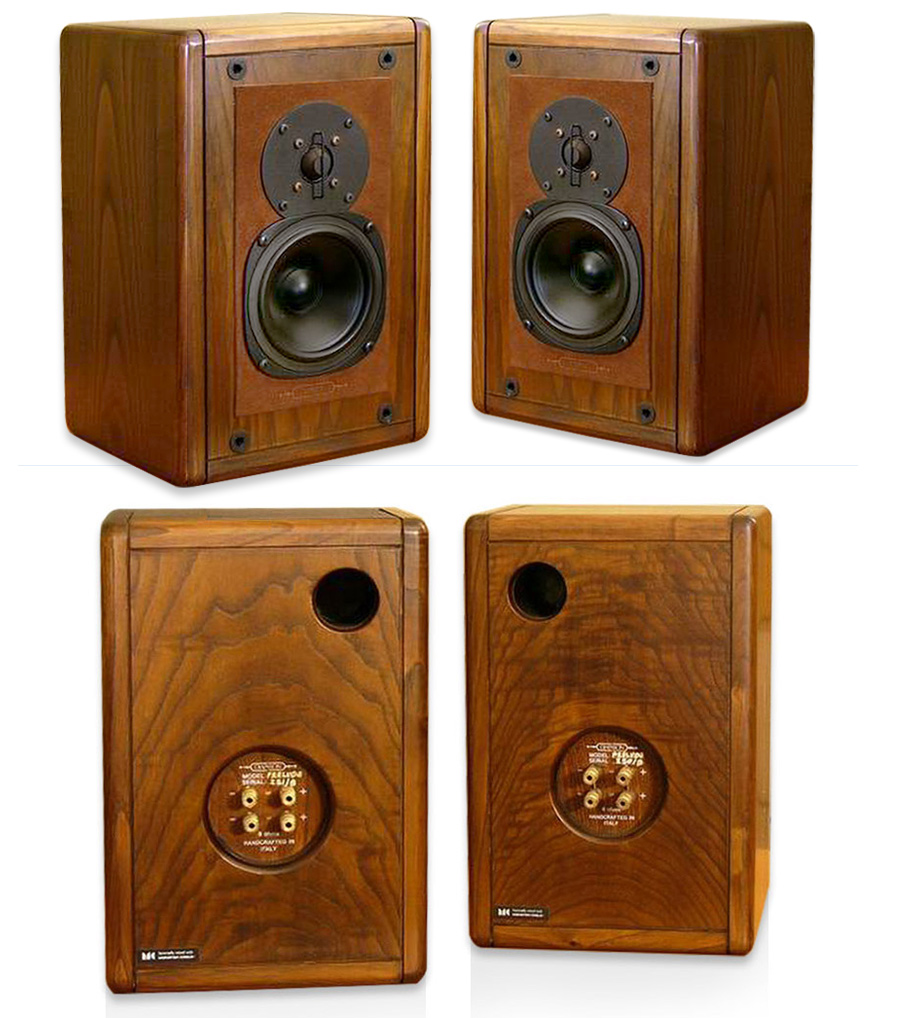
The Diapason Prelude I was the beginning of everything, back in 1987. Alessandro Schiavi, the Diapason founder and president, was just a young teen when he was starting his journey in classical live music recording.
Still at a very young age he became the official recording technician of the “Festival Pianistico Internazionale” held in the Brescia’s “Teatro Grande”. He had all the necessary equipment but he desperately needed a reliable mixing monitor; unsatisfied with what was available back then he decided to build up a speaker fulfilling his needs playing around two iconic speaker units: the Seas mid-woofer P14 RCY and the Audax tweeter HD100 D25. The resulting loudspeaker system’s cabinet was realized in solid chestnut wood with a baffle covered with natural leather, it was 100% ear tuned. It is interesting to point out that the tweeter needed to be sweetened – according to Alessandro taste – and he came out with an intuitive but yet effective solution: placing a tiny arc across the diaphragm, in a vertical fashion and positioning in it a tiny refractor, avoiding this way direct emission while spreading the relative acoustic energy all around.
The result was a sweeter treble combined with an amazing staging ability.
Back then Alessandro had a tiny control room on the Gran Teatro’s proscenium arch: musicians were used to step in listening to the recordings and being amazed by the Prelude I sound. The Diapason journey was just began.
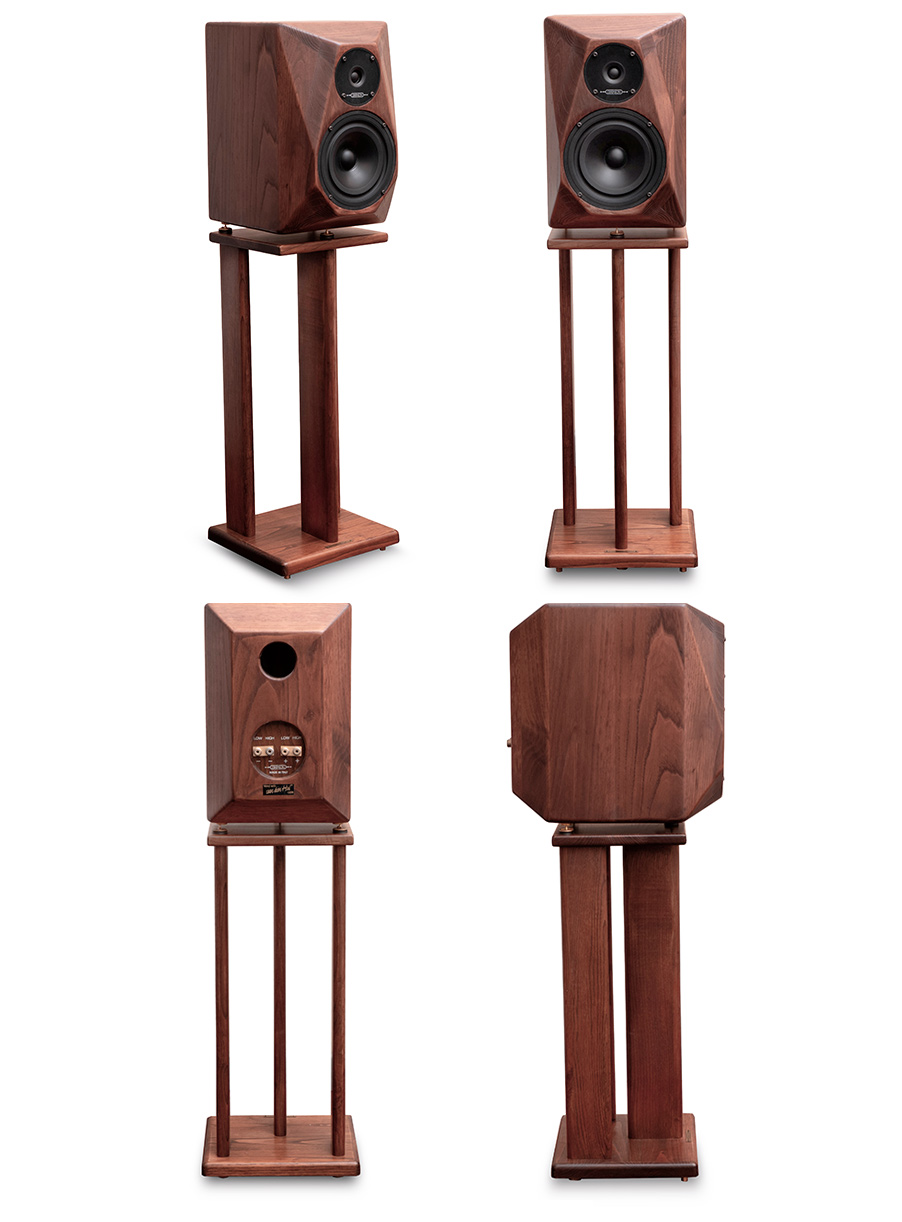
The level of satisfaction provided by the Prelude I was great: an extremely pleasant listening experience, particularly with strings and baroque music. However, Alessandro began to feel the desire to improve further: he thus started a project that would expand the already notable prerogatives of the progenitor, identifying the power handling and the extension of the low range as areas of potential improvement. He began to “play” with the form factor of the Prelude, keeping the base and height unchanged, but increasing the depth, in order to provide an adequate load volume to the chosen speaker, a 6.5” instead of 5”, the Seas P17 RCY / P. The increased volume made necessary to devise a stratagem in order to come up with gentle shapes: the idea of the facets was born, initially placed only in the upper part of the baffle and then extended to the lower part. However, it was not only the aesthetic aspect that guided Alessandro’s pencil, there was also the intuition that this solution would have drastically reduced diffractions, approximating the new project to an ideal point source. It was decided to use solid chestnut wood, in order to proceed with subsequent realizations of the cabinet: the definitive version included a further increase in volume – in terms of depth – which was added on the back and was also faceted. Among the additional peculiarities of Adamantes I, it is worth mentioning the customized connectors with 24K gold-plated brass body, the Van den Hul internal wiring https://www.vandenhul.com/ that – still today – accompanies every Diapason creation. In 1989 they were launched at the Top Audio in Milan and demonstrated by reproducing the original masters of the recordings made by Alessandro, a choice that gave value to a pillar of the Diapason philosophy: “you cannot effectively develop a loudspeaker without the experience of assiduous attendance of live music!”
In 1991, an enthusiastic review of the Adamantes I was published on Audio Review, by Bebo Moroni who wrote the following: https://www.facebook.com/photo.php?fbid=1466030693614896&id=1460265690858063&set=a.1460268157524483&locale=it_IT (He will later mention them on videohifi.com https://videohifi.com/classifiche-diffusori/ calling them an absolute reference mini speaker), shortly thereafter the adventure of international distribution of Diapason began.
https://www.seas.no/images/stories/vintage/pdfdataheet/h0548_p17rcyp.pdf
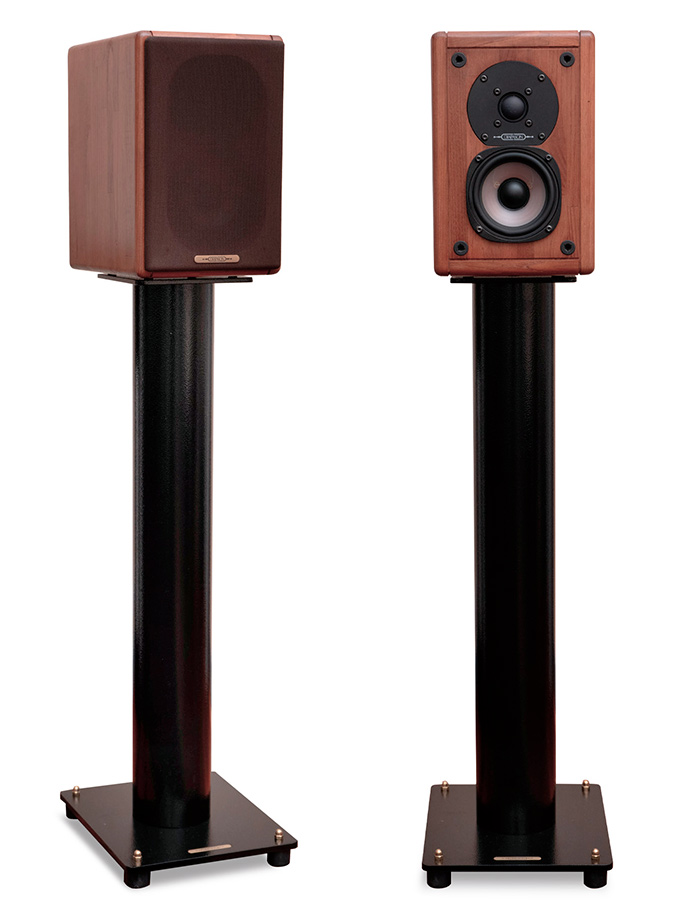
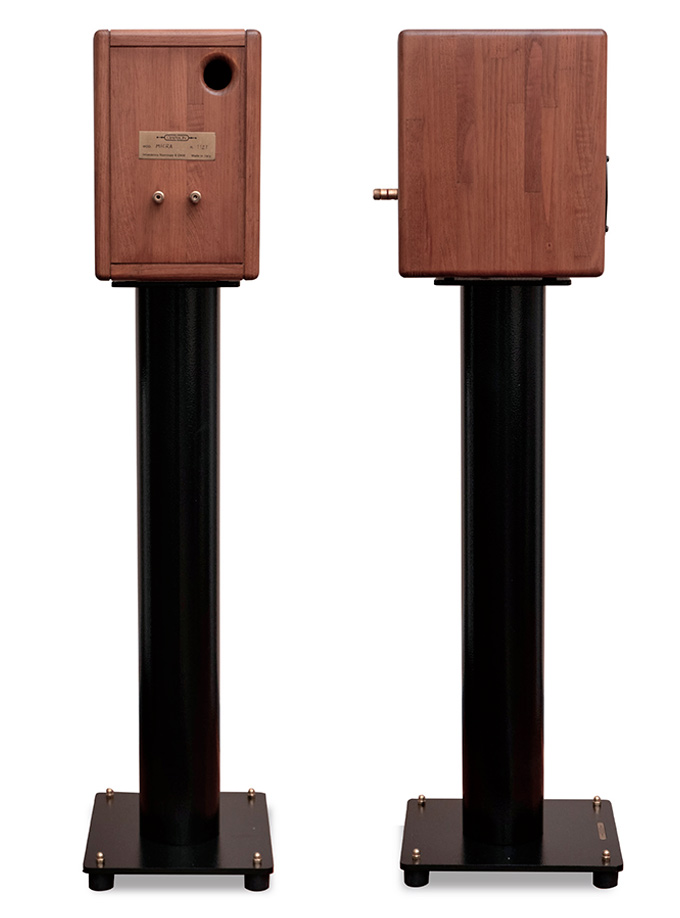
It was 1991 and Diapason had by then consolidated itself as a small and solid artisan reality, thanks to the success of Prelude I and Adamantes I. The relationship with the main technical supplier, the Norwegian Seas, was in the meantime becoming more and more fervent and fruitful.
In particular, the Norwegians showed up proudly submitting to Alessandro a new small speaker that they proudly considered a very well executed design. It was a 4″ mid-woofer, the first iteration of the current ET11RC4Y-DI. Alessandro found the idea of making a micro speaker with such a tiny mid-woofer extremely intriguing. Furthermore, the project allowed the brand to expand its range downwards, proposing an “entry level” concept, an open door into the Diapason universe.
The way forward was to pair the small speaker with the classic 25TFFC tweeter, also produced by Seas, and to create a simple but effective cabinet, in solid wood and based on that of the Prelude I. From a circuit point of view, it was a classic “two-way” with the peculiar characteristic of an impedance module that sas extremely easy to drive.
The success was immediate and continues to this day: Micra has reached its third iteration and is still there to remind us how a small speaker, despite its obvious limitation in terms of low-frequency extension, has enormous advantages in terms of mid-range expressiveness. and the emotional component contained in every musical performance. Micra is an intimate connection with the emotional component contained in every musical performance.
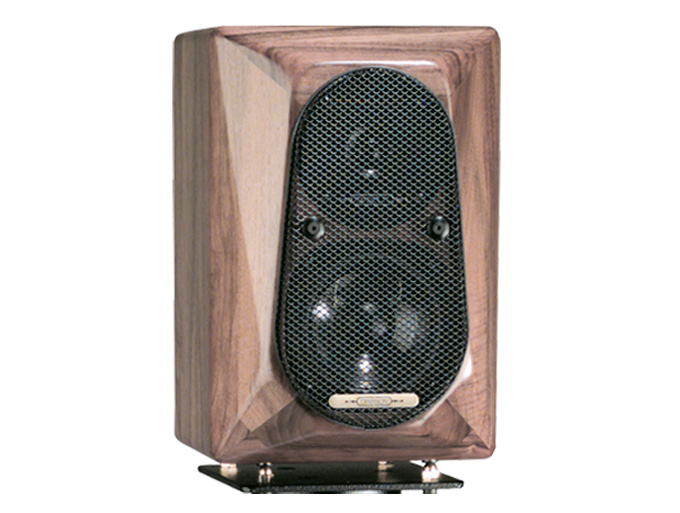
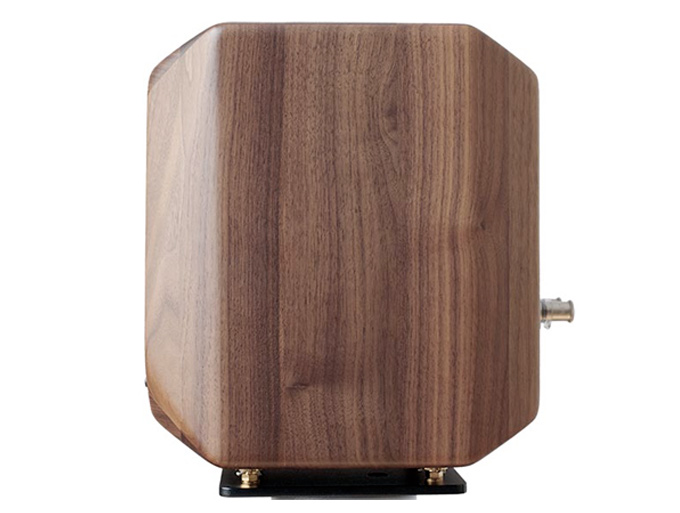
The first generation of Karis was born in 1998, from a specific need: Alessandro wanted to express the best of Diapason’s soul and sound philosophy even in very intimate spaces.
The intent was to create a speaker that was small in size but gigantic in sound. The result was, in effect, a compact version of the Adamantes: not simply a “scale reduction,” but rather a distillation of its essence.
From the Adamantes, Alessandro retained the exact proportions and distinctive multi-faceted diamond design that characterizes the front and back of its bigger sister. As with the Adamantes, the Karis benefited from this design approach, “disappearing” from perception and delivering a soundstage completely independent from the speakers. This result has always been particularly dear to Alessandro, who has made it a cornerstone of the Diapason design philosophy: the only protagonist must be the music and each speaker is conceived as a work at its service, like a true acoustic instrument.
The Karis cabinet was crafted from solid walnut slats.
This is where the time-tested craftsmanship of our master craftsmen came into play: a craftsmanship that is art and has made the Karis a precious little gem, pleasing to the eye and to the touch. But, as had become consolidated knowledge by then, this was not simply an aesthetic choice: solid wood is functional to the musicality, offering a unique tonal contribution that allows the speaker to “sing” with a naturalness otherwise not attainable, conveying the emotion of live music.
For the Karis, Alessandro chose to use an improved version of the exceptional 4″ mid-woofer used in the Micra, optimized to work specifically with the load volume represented by the Karis. It was paired with the same 19 mm tweeter as the Adamantes, the legendary Scan speak D2010, a transducer capable of reproducing harmonics with disarming clarity. Aiming for speed, Alessandro also applied Direct Drive technology here, developed in collaboration with Norwegian company Seas, which produces these drivers exclusively for Diapason. The principle is simple: the natural frequency response of the mid-woofer allows for direct connection to the rear connectors, without the use of a low-pass circuit. The result is immediately perceptible: exceptional speed and control at low frequencies. Pure dynamics.
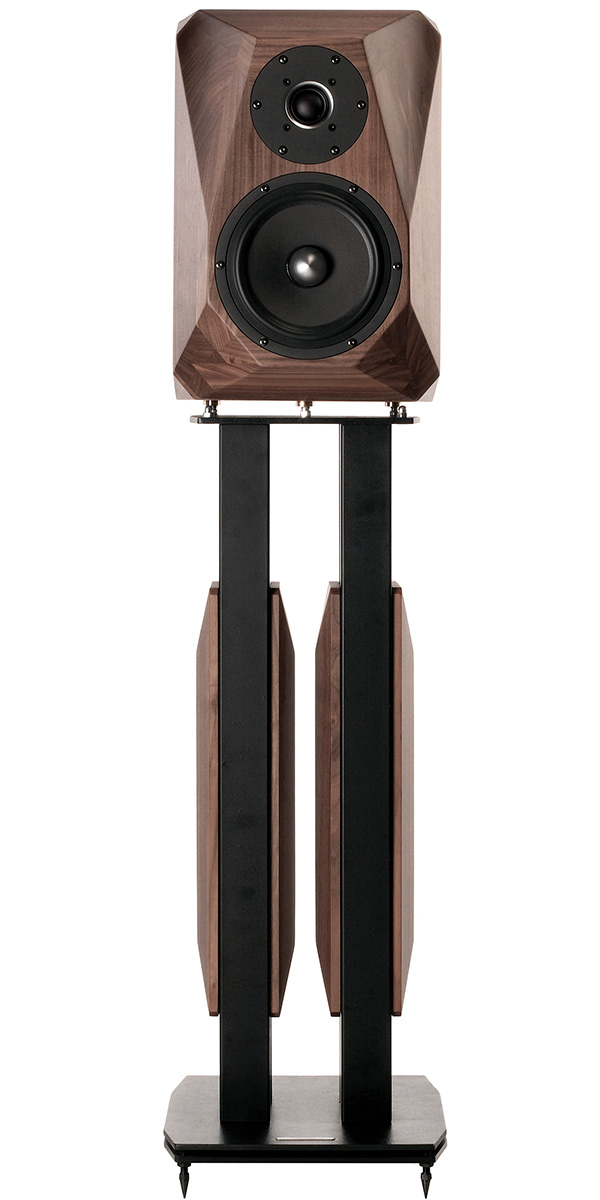
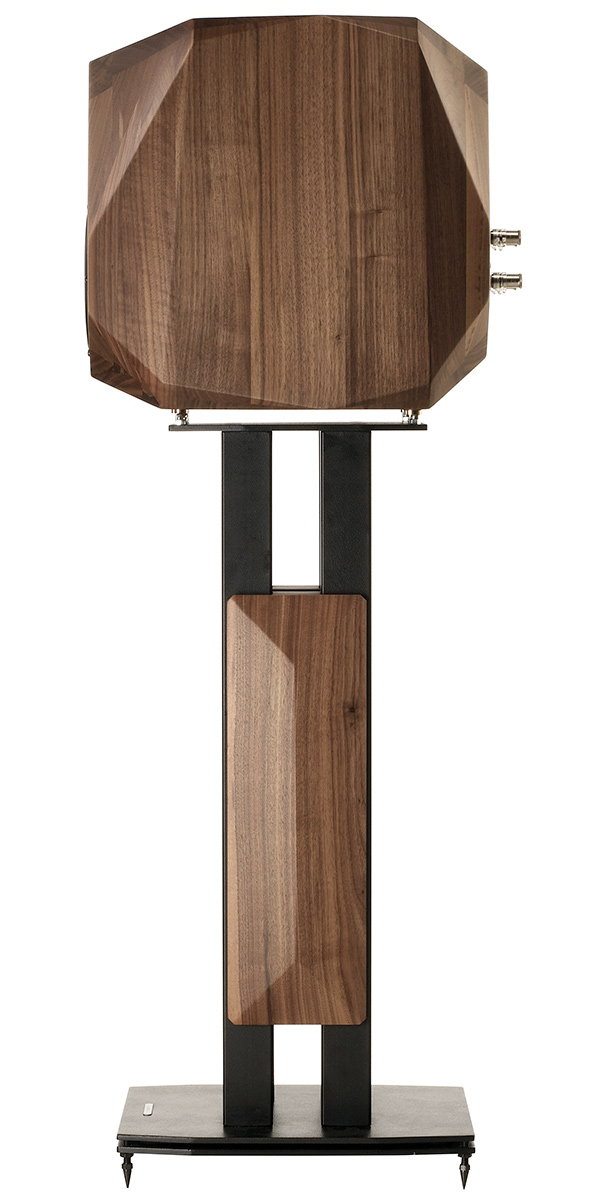
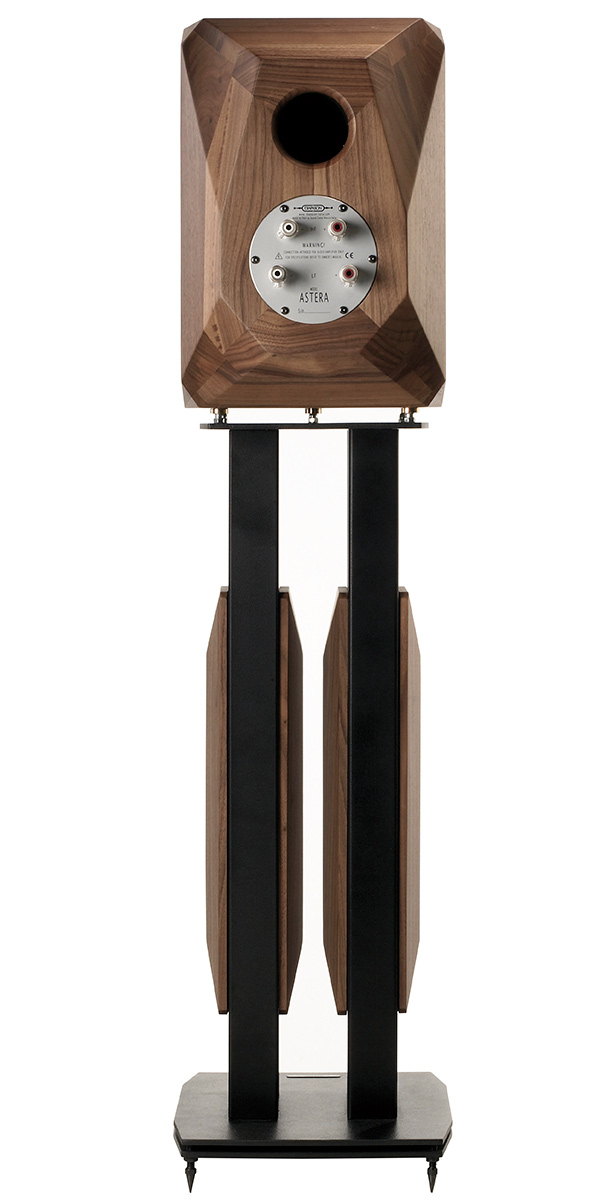
When Ástera was born, in 2009, it was certainly not conceived as a cold technical drawing. It was born from the desire to capture the essence of music even more deeply, to give form to a sonic idea. Alessandro conceived it to be the purest fruit of the expertise in solid wood processing, infused with the mastery of our master craftsmen, honed over years of experience.
The extreme multi-faceted diamond shapes of Astera’s cabinet certainly aren’t an aesthetic choice, but rather a refinement of the path traced by Adamantes, pursuing the same goal: to make the speaker disappear from the soundstage. Astera’s geometries were calculated to allow the drivers to have a dispersion—around the speaker—close to optimal, minimizing diffractions: this allowed Alessandro to get closer to the theoretical ideal of the point source. In particular, the curvature of the front and rear panels, achieved with extremely precise CNC machining, makes the geometry even more effective, dramatically improving three-dimensionality, detail, and realism. The listener doesn’t hear the sound coming from a box; they are immersed in the musical event, vividly perceiving only the music, in all its nuances.
To best emphasize the sonic purity resulting from this research, Alessandro chose only the best, top-notch components, selecting the finest drivers from Norwegian company Seas.
The tweeter is based on a 29mm treated silk soft dome diaphragm, “motorized” by a highly advanced “Hexadim” magnetic system whose ventilation is managed by a carefully optimized rear decompression chamber: a choice that guarantees incredibly natural and transparent high-frequency reproduction.
The mid-woofer is based on a “Nextel”-coated paper cone and a magnetic system designed with copper rings to inhibit intermodulation distortion. Alessandro completed the whole project with the careful design of a crossover in which the components are tested and matched within the pair with extremely tight tolerances, allowing only 1% variations.
The circuit wiring was done directly, using Van den Hul oxygen-free copper and silver cables, without a printed circuit board to ensure that the signal reaches the drivers in the purest possible way.The result of all this research and attention to detail is a reproduction of extreme naturalness, transparency, and detail. Ástera amazed Alessandro with its musicality and its ability to enhance the contrast and power of the instruments in space: it is capable of incredible clarity and focus.
It’s no longer just listening to music: it’s experiencing music, hearing it with a balance and harmonic richness that are disarmingly natural to the human ear.
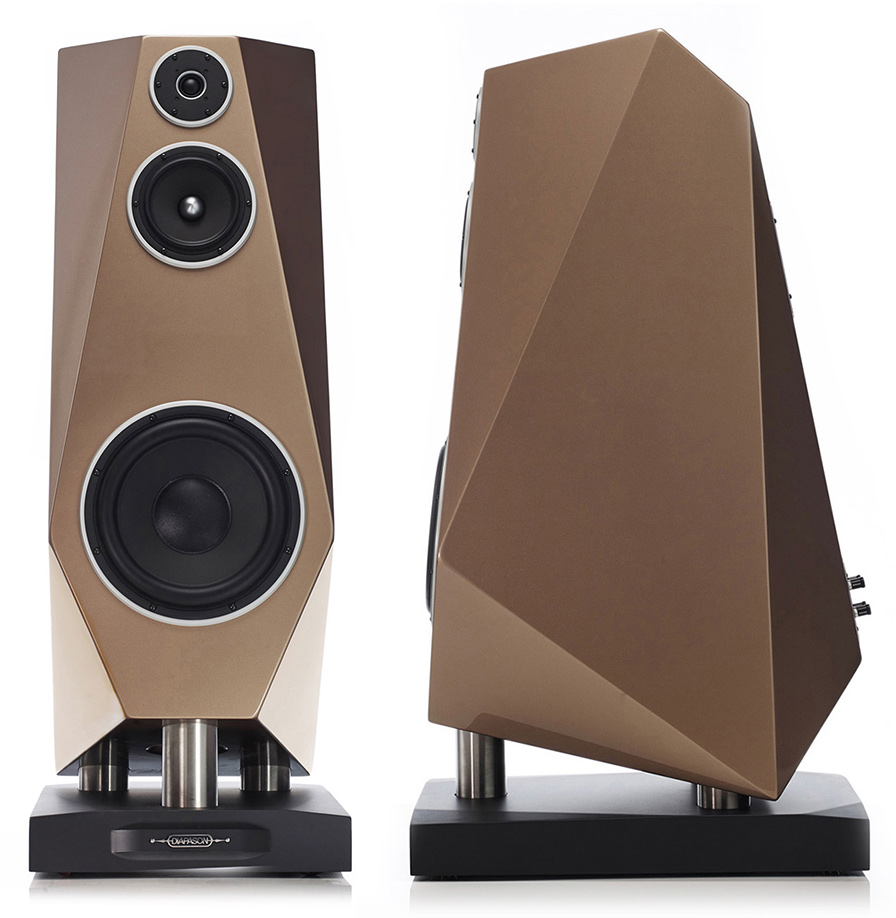
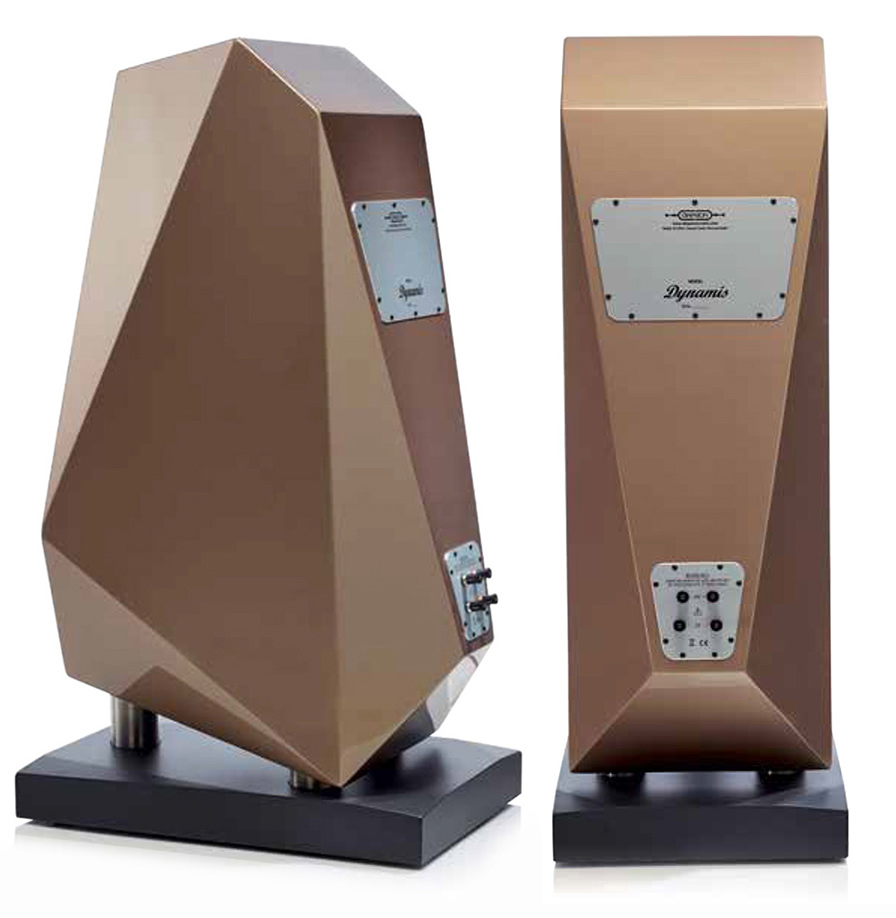
Dynamis is more than just a speaker; in 2014, it represented the culmination of a thirty-year journey, the culmination of Alessandro’s extensive experience and the research he conducted at DIAPASON.
The goal was to create a benchmark floorstanding speaker, a project that embodies excellence in every aspect of sound reproduction, a true top-of-the-line product.Dynamis embodies the originality of Italian design, where form follows function: its defining aesthetic, that of a solid polygon, is no accident; it is the floorstanding evolution of the idea Alessandro successfully experimented with starting with Adamantes: the multi-faceted cabinet.
The Dynamis cabinet design required Alessandro to carefully calculate the proportions of its 14 sides, which were then assembled so that only two of them were parallel. This was crucial because the absence of parallel sides drastically reduces internal resonances, eliminating standing waves that would otherwise “dirty” the sound.
The result was a cabinet that is tuned, as if it were a real acoustic instrument, and is also a work of Italian craftsmanship of the highest caliber: it is made of high-density MDF, combined with the proven assembly technology developed over years of work on the Adamantes, Karis, and Astera. The innovative element lies in Alessandro’s decision to apply a special layer of fiberglass coating to the Dynamis cabinet, giving the structure an incredible solidity that guarantees a tangible improvement in sonic performance. Authentic Italian craftsmanship shines through in the finishing touches: our master craftsmen add the finishing touch, applying any color or material imaginable upon request, allowing Dynamis to blend with a strong, original aesthetic into any setting.
To achieve uncompromising performance, every element had to be the best, undeniably the best, Alessandro believed.
The midrange speaker features a powerful magnetic assembly, a Nextel-coated paper cone, and a long-excursion voice coil, ensuring extremely low-distortion reproduction and excellent transient response. It is paired with a refined, hand-coated silk soft dome tweeter, chosen for its impressive magnetic flux and natural emission.
The woofer completes the frequency range, extending it into the low end with impressive depth, lending the performance solidity and great control.The pursuit of perfection is also evident in the crossover: it uses the highest-quality components, the same meticulous, ultra-low-tolerance matching that characterizes Astera, and is entirely hand-wired using Van den Hul cable, without the use of printed circuit boards.
This meticulous process eliminates any possibility of audio signal degradation, ensuring excellent dynamics in all listening conditions.But beyond design and technology, Dynamis was built for a single purpose: the emotion of listening.When all these elements work in harmony—timbral consistency, dynamic capability, naturalness, and three-dimensionality—the listener closes their eyes and perceives the real presence of the musical instruments on stage.
Dynamis promises to deliver pure musical emotion, the experience of reliving the music as if it were performed there, in front of you.


